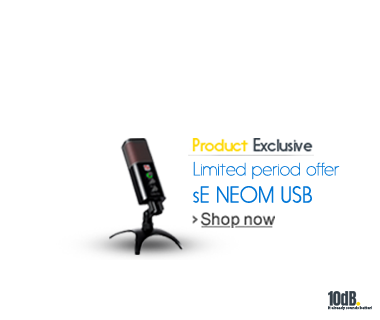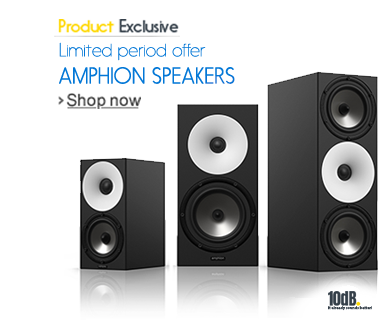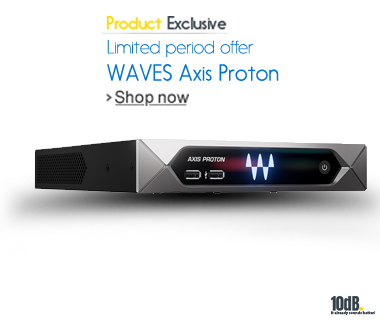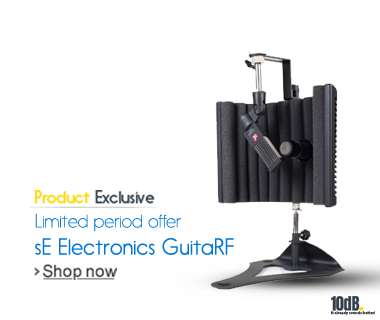Record Anywhere, Anytime with the Portable iRig Pro Quattro 1
IK Multimedia iRig Pro Quattro review
If you are a musician or content creator looking for a high-quality audio interface, then the IK Multimedia iRig Pro Quattro is definitely worth considering. The iRig Pro Quattro is a compact and versatile audio interface that allows you to record and process high-quality audio signals from a variety of sources, including microphones, guitars, keyboards, and other instruments.
Design and Features
The iRig Pro Quattro is a sleek and compact device that is designed to be portable and easy to use. It features four combo XLR/TRS inputs that can accommodate both balanced and unbalanced signals, as well as a 1/8″ headphone output and MIDI input/output ports. The device also has a USB port for connecting to a computer or mobile device, making it a versatile and flexible audio interface that can be used in a variety of settings.
One of the standout features of the iRig Pro Quattro is its ability to handle four simultaneous audio inputs. This makes it ideal for recording multiple instruments or voices at once, which is especially useful for podcasters or small bands. The device also features an ultra-low noise preamp, which ensures that your recordings are clean and free from unwanted hiss or noise.
The iRig Pro Quattro also comes with a variety of software and apps that are designed to enhance your recording experience. For example, the device comes with AmpliTube, which is a guitar amp and effects modeling app that allows you to create a wide range of tones and sounds. The device also includes a range of other apps, such as SampleTank, which is a virtual instrument workstation, and T-RackS, which is a mastering suite that allows you to fine-tune your recordings.
Performance
In terms of performance, the iRig Pro Quattro delivers high-quality audio recordings that are clear and well-defined. The device is easy to set up and use, and its compact size makes it ideal for use in small spaces or on the go. The ultra-low noise preamp ensures that your recordings are free from unwanted noise, while the built-in DSP processing allows you to fine-tune your sound to your liking.
One of the few drawbacks of the iRig Pro Quattro is its price. It is a bit more expensive than some of its competitors, which may be a barrier to entry for some musicians or content creators. However, the device’s performance and versatility make it well worth the investment for those who require a high-quality audio interface that can handle multiple inputs and provide professional-grade results.
Conclusion
Overall, the IK Multimedia iRig Pro Quattro is a fantastic audio interface that delivers high-quality audio recordings and a variety of features and software that enhance your recording experience. Its four combo inputs, ultra-low noise preamp, and built-in DSP processing make it ideal for musicians and content creators who require a versatile and flexible audio interface. While it may be a bit pricey compared to some of its competitors, the iRig Pro Quattro’s performance and features make it a worthwhile investment for those who demand the best.
IK Multimedia iRig Pro Quattro for podcasting
The iRig Pro Quattro is a versatile audio interface that is designed to meet the needs of a wide range of content creators, including podcasters. With its advanced features and intuitive design, the iRig Pro Quattro offers a range of benefits that make it a great choice for podcasters who are looking to take their productions to the next level.
Here are some of the ways that the iRig Pro Quattro can help improve your podcasting experience:
-
High-quality audio recording
The iRig Pro Quattro features four high-quality microphone preamps that allow you to record multiple sources of audio simultaneously. Whether you’re recording a single voice or multiple guests, the iRig Pro Quattro can help ensure that your audio sounds clear and professional.
-
Versatile connectivity options
The iRig Pro Quattro offers a range of connectivity options, including XLR, 1/4″ TRS, and MIDI inputs, as well as a headphone output. This means that you can easily connect a range of microphones, instruments, and other audio sources to the iRig Pro Quattro to create a unique and dynamic podcast.
-
Easy to use
The iRig Pro Quattro is designed to be easy to use, even for podcasters who are new to audio production. Its intuitive interface and plug-and-play design make it easy to connect and use, so you can focus on creating great content rather than getting bogged down in technical details.
-
Portable
The iRig Pro Quattro is also incredibly portable, which makes it a great option for podcasters who are always on the go. Its compact size and durable construction mean that you can take it with you wherever you go, so you can record podcasts from anywhere, at any time.
-
Compatible with a range of software
The iRig Pro Quattro is compatible with a range of recording software, including popular options like GarageBand, Pro Tools, and Logic Pro X. This means that you can use the software that you’re most comfortable with to create your podcasts, rather than having to learn a new program from scratch.
In conclusion, the iRig Pro Quattro is an excellent choice for podcasters who are looking for a versatile, high-quality audio interface that is easy to use and portable. With its range of advanced features and intuitive design, the iRig Pro Quattro can help you take your podcasting to the next level, whether you’re recording from your home studio or on the go.
iRig Pro Quattro vs. iRig Pro Duo
If you are looking for a compact and versatile audio interface for your music production or content creation needs, you may have come across two popular options from IK Multimedia: the iRig Pro Quattro and the iRig Pro Duo. While both devices share some similarities, there are some key differences that may influence your purchasing decision. In this article, we will compare the iRig Pro Quattro and the iRig Pro Duo to help you decide which one is right for you.
Inputs
The iRig Pro Quattro features four combo XLR/TRS inputs that can handle both balanced and unbalanced signals, while the iRig Pro Duo features two combo XLR/TRS inputs. This means that the iRig Pro Quattro is better suited for recording multiple sources at once, such as a small band or a podcast with multiple guests. The iRig Pro Duo, on the other hand, is ideal for solo artists or small ensembles.
Preamps
Both the iRig Pro Quattro and the iRig Pro Duo feature high-quality preamps that ensure a clean and noise-free signal. However, the iRig Pro Quattro features an ultra-low noise preamp, which makes it a better choice if you are recording in a noisy environment or with sensitive microphones.
Outputs
Both devices feature a 1/8″ headphone output and a MIDI input/output port. However, the iRig Pro Quattro also includes four balanced 1/4″ outputs, which can be used to connect to studio monitors or external recording devices. This makes the iRig Pro Quattro a more versatile option for recording and monitoring.
Software
Both the iRig Pro Quattro and the iRig Pro Duo come with a range of software and apps that can enhance your recording experience. For example, they both come with AmpliTube, which is a guitar amp and effects modeling app that allows you to create a wide range of tones and sounds. However, the iRig Pro Quattro also includes a range of other apps, such as SampleTank, which is a virtual instrument workstation, and T-RackS, which is a mastering suite that allows you to fine-tune your recordings.
Price
The iRig Pro Duo is more affordable than the iRig Pro Quattro, making it a good choice for those on a budget. However, the iRig Pro Quattro’s additional inputs, outputs, and software may justify the higher price tag for those who require more versatility and functionality.
Conclusion
In summary, the iRig Pro Quattro and the iRig Pro Duo are both excellent audio interfaces that offer high-quality preamps, versatile connectivity options, and a range of software and apps to enhance your recording experience. The iRig Pro Quattro is better suited for recording multiple sources at once, while the iRig Pro Duo is ideal for solo artists or small ensembles. The iRig Pro Quattro is more expensive than the iRig Pro Duo, but its additional inputs, outputs, and software may make it a more worthwhile investment for those who require more functionality and versatility. Ultimately, your choice will depend on your specific needs and budget.
How to use IK Multimedia iRig Pro Quattro
The IK Multimedia iRig Pro Quattro is a versatile audio interface that can be used for a range of music production and content creation tasks. Whether you’re a singer-songwriter, podcaster, or home studio enthusiast, the iRig Pro Quattro can help you achieve professional-quality recordings with ease. In this article, we’ll walk you through how to use the iRig Pro Quattro.
Step 1: Connect the iRig Pro Quattro to your device
The iRig Pro Quattro can be connected to your computer, smartphone, or tablet via USB, Lightning, or USB-C, depending on your device. Simply plug in the appropriate cable to the corresponding port on the iRig Pro Quattro and connect the other end to your device.
Step 2: Connect your instruments or microphones
The iRig Pro Quattro features four combo XLR/TRS inputs that can handle both balanced and unbalanced signals. This means you can connect up to four microphones or instruments simultaneously. Simply plug in your instrument or microphone to one of the inputs using an appropriate cable. If you’re using a microphone, make sure to turn on the +48V phantom power switch if necessary.
Step 3: Set your levels
Before you start recording, it’s important to set your input levels correctly. The iRig Pro Quattro features four gain knobs, one for each input. Start with all the knobs set to their minimum position and gradually turn them up until you reach the desired level. Make sure the LED meter lights are not clipping, indicating that the signal is not too hot.
Step 4: Monitor your recordings
The iRig Pro Quattro features a 1/8″ headphone output that allows you to monitor your recordings in real-time. Simply plug in your headphones and adjust the volume using the headphone knob. You can also use the direct monitoring switch to hear the input signal without any latency.
Step 5: Record your tracks
Once you’ve set your levels and monitored your recordings, it’s time to hit record. You can use your favorite DAW (Digital Audio Workstation) or recording app to record your tracks. The iRig Pro Quattro is compatible with a wide range of recording software, including GarageBand, Logic Pro X, Pro Tools, Ableton Live, and more.
Step 6: Playback and export your recordings
After you’ve recorded your tracks, you can listen back to them using your DAW or playback app. The iRig Pro Quattro also features four balanced 1/4″ outputs, which can be used to connect to studio monitors or external recording devices for a more detailed playback experience. Once you’re satisfied with your recordings, you can export them to your preferred file format and share them with the world.
In conclusion, the iRig Pro Quattro is a powerful and versatile audio interface that can help you achieve professional-quality recordings with ease. By following these simple steps, you can use the iRig Pro Quattro to record multiple instruments or microphones simultaneously, monitor your recordings in real-time, and playback and export your recordings with ease. Whether you’re a seasoned pro or a beginner, the iRig Pro Quattro is a great tool to have in your audio arsenal.
iRig Pro Quattro latency issues
The iRig Pro Quattro is a highly popular audio interface that offers users a range of features and benefits for their music production and content creation needs. However, one issue that users may encounter when using the iRig Pro Quattro is latency.
Latency is the time delay between when a sound is inputted into the system and when it is outputted through the speakers or headphones. Latency can be caused by a variety of factors, including software settings, processing power, and the hardware used.
If you’re experiencing latency issues with your iRig Pro Quattro, there are a few steps you can take to help minimize the problem.
-
Adjust the buffer size
One of the most common causes of latency issues is a buffer size that is set too high. The buffer size determines how much audio data is processed at once before being sent to the output. A larger buffer size can help prevent audio dropouts and other performance issues, but it can also increase latency. Try adjusting the buffer size to a lower value to see if this helps reduce latency.
-
Optimize your software settings
Many recording software programs have settings that can be optimized to help reduce latency. For example, some programs have settings that allow you to adjust the buffer size or to use lower-quality settings to improve performance. Make sure to check your software settings and adjust them as necessary.
-
Use a faster computer
If your computer doesn’t have enough processing power, this can lead to latency issues. Try using a faster computer with a faster processor and more RAM to help minimize latency.
-
Use a direct monitor feature
The iRig Pro Quattro features a direct monitor feature that allows you to hear the input signal without any latency. This can be useful when recording, as it allows you to monitor your input signal in real-time. Make sure to activate the direct monitor feature in your recording software to take advantage of this feature.
-
Use a high-quality cable
Sometimes, latency issues can be caused by using low-quality cables. Make sure to use high-quality cables that are designed for audio applications to help minimize latency.
In conclusion, if you’re experiencing latency issues with your iRig Pro Quattro, there are a number of steps you can take to help reduce the problem. By adjusting the buffer size, optimizing your software settings, using a faster computer, activating the direct monitor feature, and using high-quality cables, you can help minimize latency and achieve the best possible performance from your iRig Pro Quattro.









A really extended and interesting article. I got to try the iRig Pro Quattro once, and I was really impressed with it. You have undoubtedly provided me with a lot of vital information here before purchasing. Thank you!